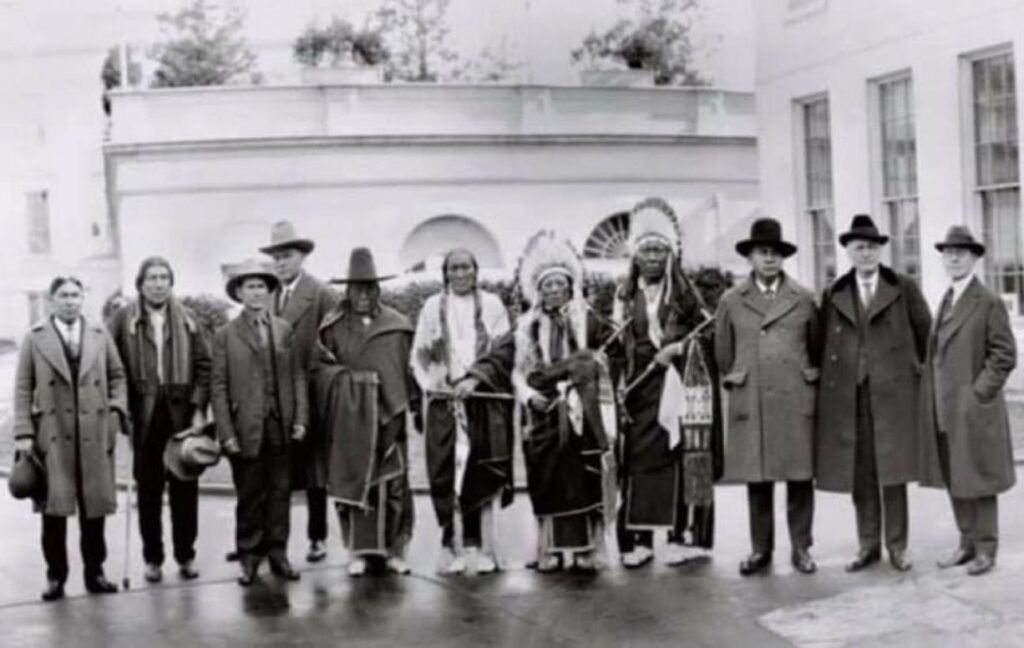The Cowlitz Tribe is a Northwest Indian Tribe that lived in present-day Washington state.
The Cowlitz tribe was historically based along the Cowlitz and Lewis Rivers, as well as having a strong presence at Fort Vancouver (named after famous explorer George Vancouver).
Jump to:
Cowlitz Tribe History
The first European to make contact with the Cowlitz Tribe was a French-Canadian from Quebec named Simon Plamondon. He was a fur trapper from Fort Astoria, and while making his first tribe into the territory, he was captured by Chief Scanewea.
While captured, he was asked to prove his loyalties by staying with the tribe and exchanging goods for furs. Plamondon was able to gain the trust of the tribe and was then offered the chief's daughter, Thas-e-muth, in marriage.
When Chief Scanewea passed, Plamondon inherited most of his land and settled down with his wife on the Cowlitz Prairie, where they bore four children: Sophie, Simon, Jr., Theresa, and Marianne. It is rumored that Plamondon was married many different times and very young and boring, close to a total of nearly 100 descendants. Plamondon was employed with the Hudson's Bay Company until 1837 and, in 1838, oversaw the building of Cowlitz Farm under the Puget Sound Agricultural Company, the Hudson's Bay Company agricultural subsidiary.
The first European who attempted to convert the Cowlitz to Christianity was Herbert Beaver, an Anglican, who settled with his wife at Fort Vancouver in 1836. The couple set their sights on the Cowlitz tribe, only 50 miles southeast of Fort Vancouver, but growing tensions with John McLoughlin, the head at Fort Vancouver, prevented the couple from having any influence over the tribe; implementing their practices was with great difficulty.
When the intermittent fever broke out, Beaver was responsible for vaccinating nearly 120 Lewis River Cowlitzes. After conflicts arose with McLoughlin, Beaver and his wife headed home to London in 1838 to continue their work.
Later that same year, in December 1838, Catholic missionaries began to visit the Cowlitz tribe, including François N. Blanchet, a Roman Catholic Priest, who arrived near Toledo, Washington, and established the St. Francis Xavier Mission.
A once optimistic priest became discouraged when the Cowlitz tribe did not fully immerse themselves into Catholicism and instead held onto sediments of Native spirituality. As a response, a replacement, Father Modeste Demers, continued with Catholic teachings and baptizing, but he continued to remain just as pessimistic as his past predecessor did. After the priest left, the Cowlitz reportedly told the French-Canadian farmers, "We want to do something for them. We will work, make fences, and do whatever they wish us to do."
With the arrival of American settlers and conflicts arising over land claims, the 1846 Oregon Treaty gave the US government power back over once-owned British lands of the Hudson's Bay Company. With British influence and French-Canadian fur trappers out of the picture, newly appointed Washington governor Isaac Stevens drafted four main treaty negotiations: Point Elliot, Point No Point, Neah Bay, and Medicine Creek.
The Chehalis River Treaty, which included the Cowlitz tribe, was the last negotiation for Stevens; his refusal to listen to the tribe leader's negotiations and concerns led to the document never being signed. The fever struck the tribe during this time, and Stevens's assistant George Gibbs had determined that "the Cowlitz, a once numerous and powerful tribe, are now insignificant and fast disappearing."
As a consequence, this led to the Indian Wars of 1855–1856, in which the U.S. Army was called to settle disputes with Native American tribes.
The Cowlitz tribe remained neutral because of the government's promise of reservation lands if they remained peaceful, but after returning home, they found their land destroyed and property stolen.

Lifestyle
Similar to the Chinook Tribe, the Cowlitz practiced the flattening of the heads of children. This was the mark of freedom and social status. The children would endure this flattening until they reached eight to twelve months old
The process is completed by placing a child onto a wooden board, usually covered with moss or loose fibers of cedar bark, then placing a pad between a piece of smooth bark, strapped on through the holes with leather bands, creating great pressure on the forehead. The result creates a wedge in between the skull, with the front of the skull flat and the skull risen at the crown. These practices were not seen as harmful to the mothers and their children; in fact, some children would cry until they were placed back into the head-flattening device.
The Cowlitz tribe's primary food was salmon, along with what they grew from the ground.
